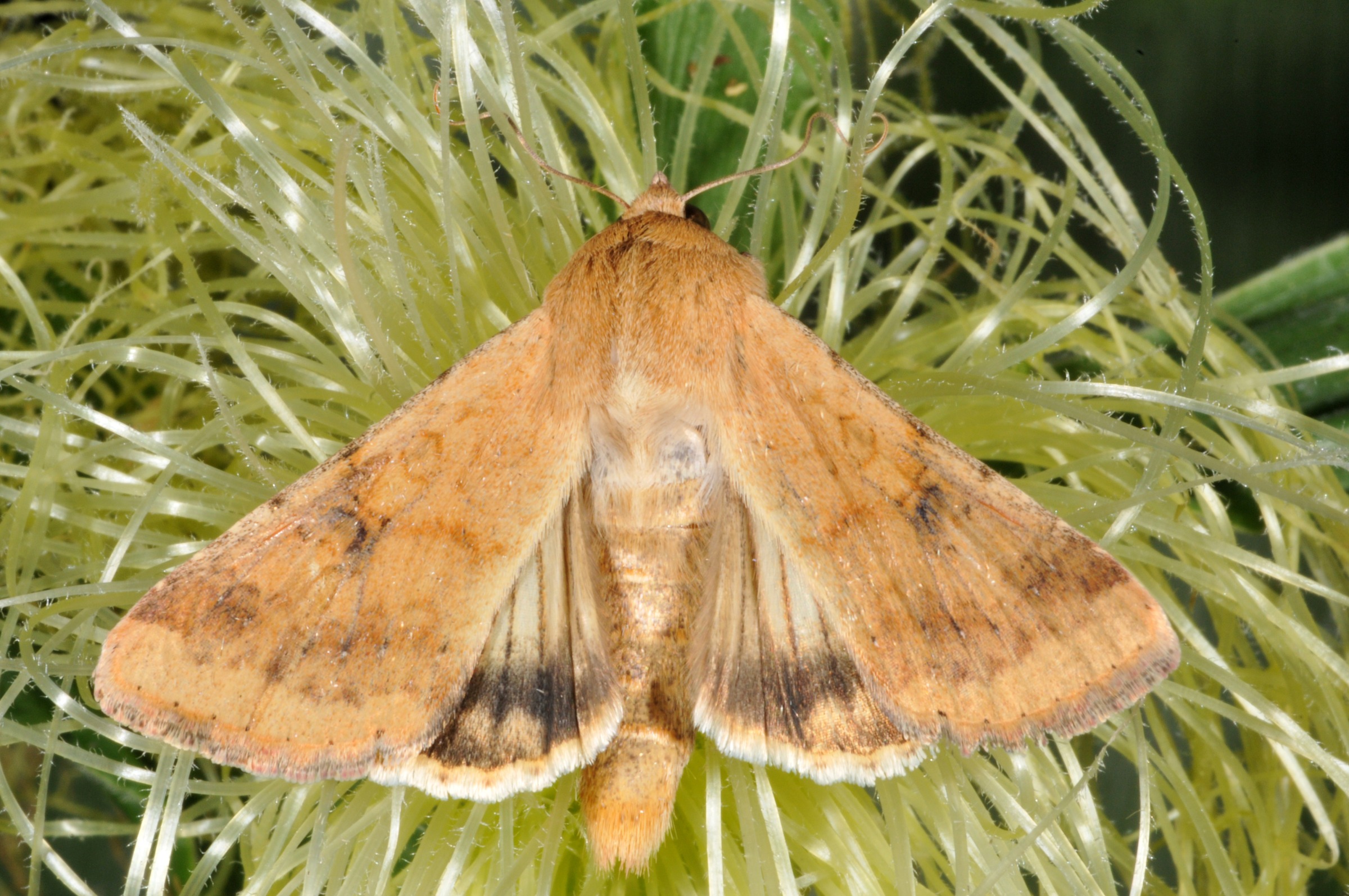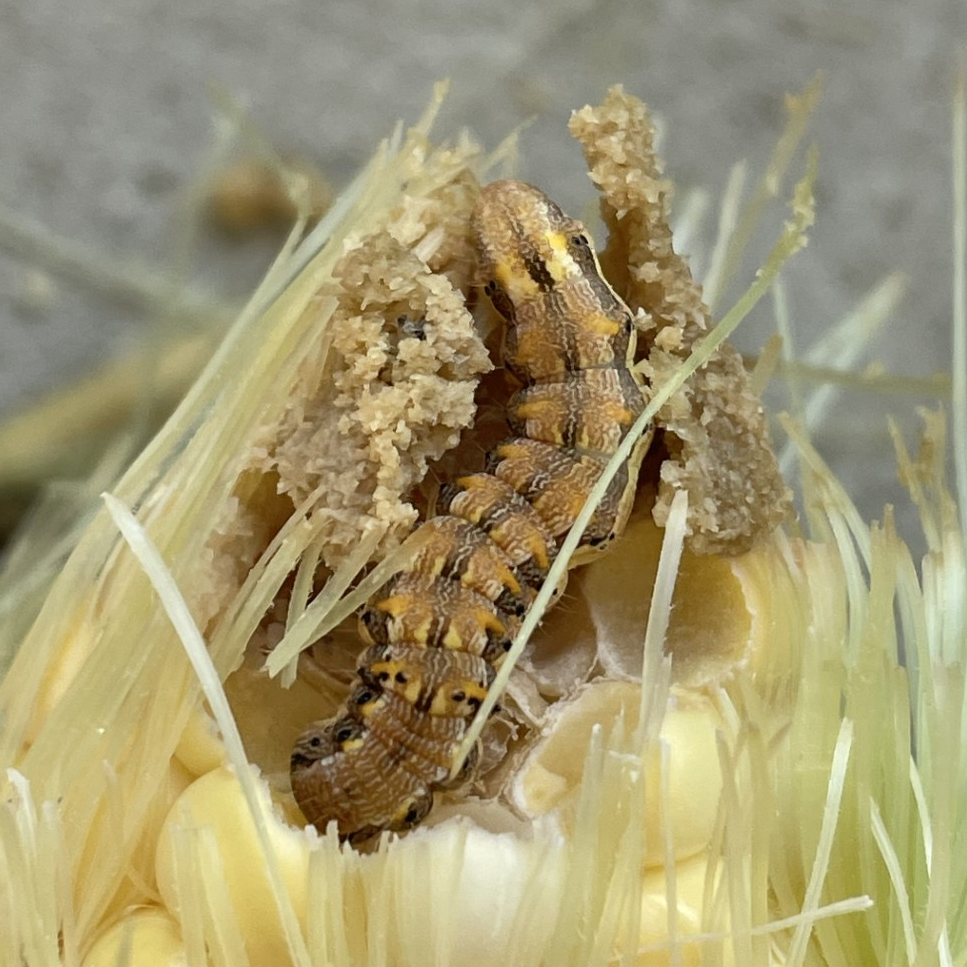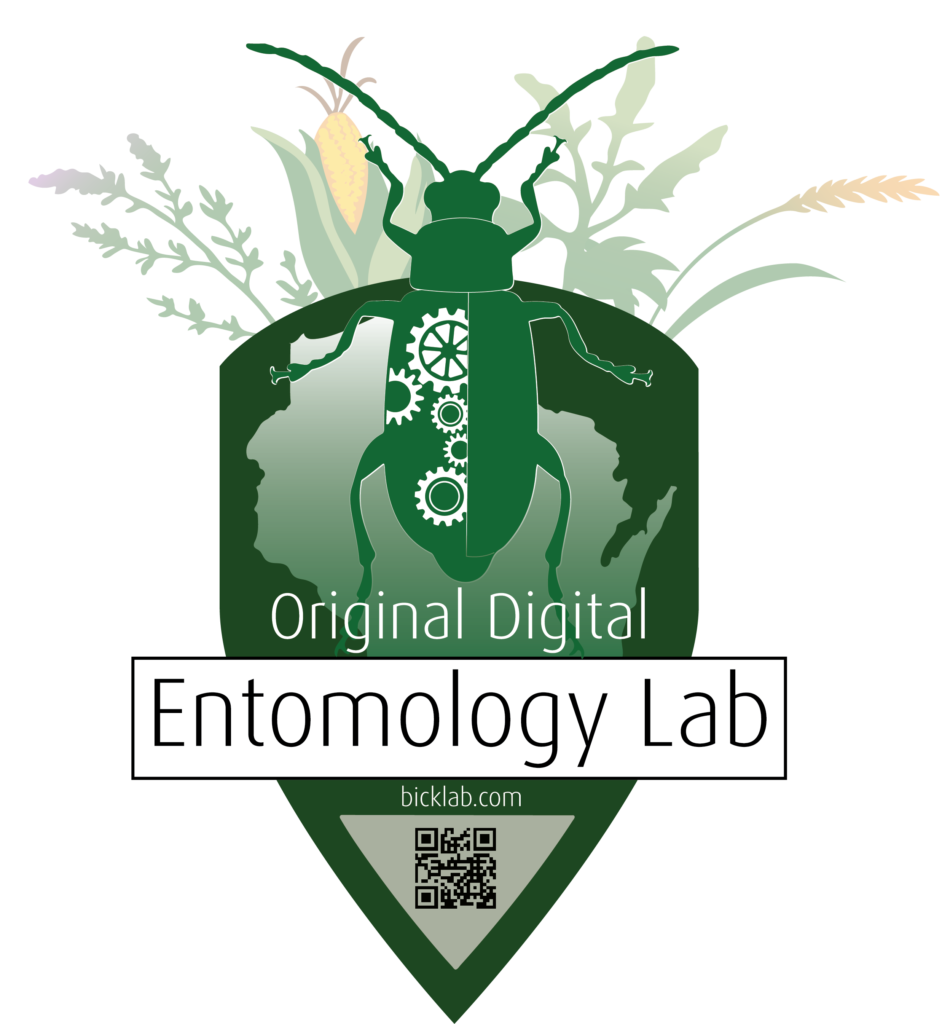It’s time to scout for corn earworm in field and sweet corn!
Early July corn earworm flights in Wisconsin are the largest they’ve been since 2012. The bulk of earworm moths normally begin arriving in mid-August.
Corn earworm larvae feed on the tips of corn ears, typically damaging the top one to two inches by eating kernels and leaving behind frass. This type of feeding damage can create openings for fungal pathogens to infect the ear.


Scouting
Pheromone Traps
Scout for corn earworms using a pheromone trap. Begin monitoring when corn is in the green silk stage.
Place the trap four to six feet above the ground on the south or west side of the field. Check the trap daily starting in July for moths. Rotate the traps to silking fields as needed.
If you don’t have a pheromone trap, you can look at the DATCP-monitored traps near you.
Check Plants
When green silks are present, walk a W-pattern in the field. Check at least 10 plants in five areas of the field (50 plants total). Look for the small, spherical eggs in the silks to confirm the presence of corn earworm before beginning a spray program.
Treatment Threshold
Unlike other moth pests, treatment thresholds are based on moth flights. DATCP’s Corn Earworm Monitoring Network provides updates on corn earworm moth migration and captures across the state.
For sweet corn, the standard treatment threshold is >5 adult earworm moths per blacklight trap or >10 moths per pheromone trap for three consecutive nights (when green silks are present). Treat vulnerable corn (row tassel to 100% silk) with an effective corn earworm insecticide; reapply every 2-5 days until brown silks.
Integrated Pest Management Strategies
Consider planting corn earworm-resistant sweet corn varieties. Beneficial insects feed on corn earworm eggs and small larvae. Parasitic wasps also control corn earworm larvae. Chemical control may be warranted if five to 10 adult earworm moths are captured per night for three consecutive nights while green silks are present. Find more information about management strategies in this corn earworm resource.
Additional Resources
Learn more about corn earworm with UW-Madison Extension’s Managing Corn Earworm in Wisconsin Corn Fields resource.
Look at Ag Weather degree day models to determine the risk for corn earworm in your area.
Subscribe to the DATCP Pest Survey Program’s Field Notes newsletter for pest updates throughout the growing season.
If you found this information online, you can sign up for insect pest text alerts.





